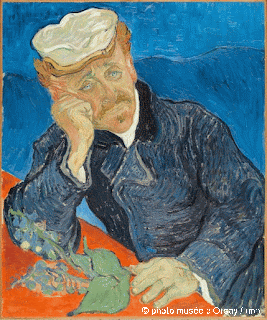Wednesday, January 08, 2014 -  Judge Arthur Tompkins
Judge Arthur Tompkins
 No comments
No comments
 Judge Arthur Tompkins
Judge Arthur Tompkins
 No comments
No comments
Postcard from Cambridge: Judge Arthur Tompkins revisits Cambridge and its ancient history
This post is the last in a four-part series of Judge Arthur Tompkin's trip last November to Europe -- museums and retail in Paris, presenting at INTERPOL on DNA, and finally revisiting to Cambridge.
by Judge Tompkins
This morning, before dawn, I walked (fortified, it must be said, by a Starbucks coffee from the Market Square … Trust an American multi-national to be up and doing early!) from our room in Caius College through the sleeping and cold town, and up to the top of Castle Hill. As the name suggests, this is a small, steep-sided hill. It lies just to the west of the Cam, along past Magdelen College. Given its dominating height in an otherwise relentlessly flat landscape, and its position overlooking the uppermost navigable limit of the Cam River, it has been the site of more or less continuous settlement in the local area since the Iron Age.
Tough Iron-agers built a fort on the hilltop, and surrounded it with small circular stone cottages. Later on, the Romans came and, as was their wont, crafted a stone-built town surrounded by a wall, to keep the weird-looking local Celts at bay. They hung around, as was also their wont, for a few centuries, but when the legions withdrew back to Rome (only to fall about in seemingly endless and self-destructive civil wars … but that’s a whole other story), the remaining Celts, first without and then with the triumphant Angles and the Saxons, fortified the town further. I’m not sure if the Vikings ever got to Cambridge, but in light of their habit of sailing up the rivers in search of prey, they probably did.
The settlement, along with much of Roman-built Britain, was abandoned in the 6th century, in advance of the long dark years of the Dark Ages. But then William, passing by after his Conquest in 1066, spotted the strategic importance of the place and built first a wooden keep and motte castle, and later a stone one. There it stood, brooding in all its Norman staunchness, overlooking the river for a few centuries. Various Tudor kings started to strip some of the stone for use in the building of King’s College Chapel, a process that accelerated under later monarchs. Henry VIII, taking time out from his soap-opera-like matrimonial-centric lifestyle, took more stone to add to his Trinity College, and then his daughter Elizabeth I, the Gloriana, completed the destruction of the Norman castle by selling off the remaining stone (probably to fund her ongoing wars with the Catholic anti-Christ, Phillip of Spain) to various Colleges, who were busily building down in the town, along the riverside.
But then Cromwell, fresh from relieving Charles I of the troublesome burden of his head, based his Eastern forces at Castle Hill during the Commonwealth, and built a massive, cannon-proof castle atop and around the hill. By then the centre of the town was very definitely down on the river flats, and after the Restoration, the castle gradually fell into ruin.
So it was to the top of a now bare but still steep grassy knoll that I arrived just as the sun was rising. Stone steps led to the small and bare hilltop. The view was fine, the sky was clear, and a slight frost crackled ever so crunchily underfoot. It was magnificent.
Cambridge was, and remains, a surreal place. Since I first came here over 30 yeas ago, in substance little has changed. There have been alterations around the margins – wi-fi in College, no cars in the centre of the city (a Very Good Thing), many more cafes and upmarket boutiques - but step through the porter’s lodge of pretty much any college, and it really has not changed a bit. There is still the very odd tripartite and tense dynamic of the students (young and feckless), the college staff and fellows (older and less feckless, and the former probably serially unimpressed by, and I would guess sometimes understandably resentful of, the antics of the students) and the townsfolk (living a parallel life alongside to, but very definitely not part of, the Colleges).
And through it all pass multitudes of tourists, looking and photographing the public face of the colleges, and searching in vain for “the University”. For the most part, they won’t find it. The University, apart from a couple of ceremonial-type buildings right in the very heart of the city – the Senate House and the Old Schools, and even then you have to know what you are looking at – remains relentlessly hidden. Its role is to confer degrees, and to provide formal teaching and laboratories etc. The Colleges, meanwhile, provide accommodation for students and fellows, pastoral care, and informal teaching – the famed Cambridge small-group tutorials known here as supervisions.
Because of this odd arrangement – found pretty much nowhere else in the world except at Oxford – and their very long and often royal histories, the Colleges, or at least some of them, have become very rich indeed, whilst the University tends to be largely dependent on the whims of central government for its funding. So it is the colleges who have built the great buildings, King’s Chapel, the Great Court and the Wren Library at Trinity, and the like, whilst the University itself remains an ethereal and elusive non-presence.
So, I bid another farewell to Cambridge and head to London and then, on Friday, back to New Zealand, secure in the knowledge that when I next return, Cambridge will still be here, and it will still be the same…



















